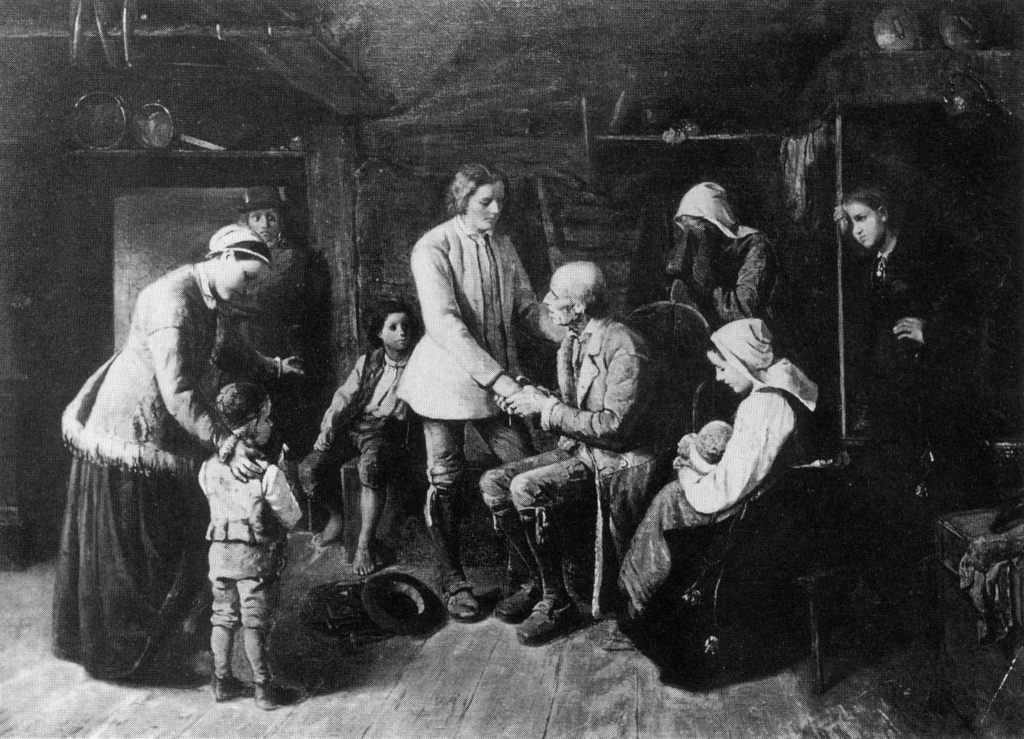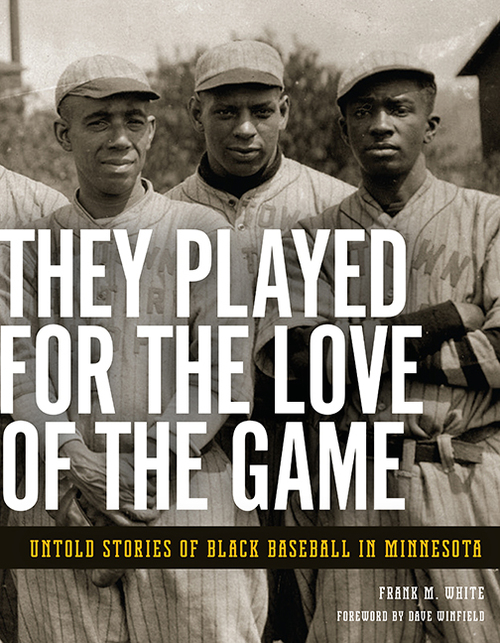Receive the Historical Messenger in your inbox once every two weeks by signing up for our mailing list!
|
This issue: Contents
Tuesday, August 23, 2016
Editor’s NoteThe days are getting shorter and the weather is getting colder…Fall is getting close! But, that doesn’t mean we’re slowing down at all here at WCHS! In case you missed it, two Sundays ago, we had Dr. Maria Nillson and John R. Ward visit the Warden’s House to talk a little about Gibel el-Silsila. “What the heck is Gibel el-Silsila?” you ask. Well, luckily for you there’s a quick video recap (1:41) on our Facebook page to fill you in. We’ve got two great events coming up in September at Hay Lake and the Warden’s House repsectively. Check out our first News Story to get all the details on “Minnesota’s Flying Migrators” and “Grandfather’s Grandfather”! And another herald that Fall is on its way is the annual Fall Membership Meeting! Step up to the plate and head down to our Second News story for more information. Whew – I was surprised that people correctly identified last issue’s “What Is This Thing?!” This week I’ll up the ante with an up-close photo of a mysterious artifact. The Washington County Fair is over, but the State Fair is just two days away! Scroll down to our Old News portion to read about the new feature of the 1872 State Fair that had all of Stillwater excited! If you’ve been keeping an eye on local news, you’ll know that Stillwater’s own Ben Blankenship has spent the last few weeks competing in Rio as an Olympic long-distance runner. Well, watching Ben isn’t the first time the St. Croix Valley has been obsessed with races. Although – in the late 1800s, horse racing was real draw. Check out today’s Featured Article to learn a little bit about the history of “running really fast in a big circle” in Washington County! Sean Pallas Historical Messenger editor and Warden’s House Site Manager WCHS NewsSeptember Events: Immigrant Stories of Hawks and People!Minnesota’s Flying Migrators Sun. September 11th @ 2:00 PM – Hay Lake School, Scandia Swoop in to meet a live raptor as Paul Smithson of the Lee & Rose Warner Nature Center explores the lives of different species of animals who call Minnesota a temporary home. Grandfather’s Grandfather: A Swedish Immigrant in Minnesota Sun. September 18th @ 2:00 PM – Warden’s House Museum, Stillwater Join author Lisa Doerr as she discusses the life of Swedish pioneer, farmer, & entrepreneur “Wood John’” Johnson. Doerr will also be signing and selling copies of her novel, “Eureka Valley: Grandfathers’ Grandfather“, a historical fictional account of life along the St. Croix River Valley. Don’t miss these FREE and open to the public events More Events WCHS NewsWCHS Fall Membership MeetingThe Washington County Historical Society fall meeting will be held at the Water Street Inn in Stillwater on Thursday, September 22nd. The evening will begin with a social hour at 5:30 PM followed by dinner at 6:30 PM. A brief meeting will begin at 7:30 followed by a presentation by our Featured Speaker author and local historian Frank White’s discussion on his new book, “They Played for the Love of the Game“. Reservations are $20 for WCHS Members and $25 for Non-Members. Reservations include dinner and admission to the program. A century before Kirby Puckett led the Minnesota Twins to World Series championships, Minnesota was home to countless talented African American baseball players, yet few of them are known to fans today. During the many decades that Major League Baseball and its affiliates imposed a strict policy of segregation, black ballplayers in Minnesota were relegated to a haphazard array of semipro leagues, barnstorming clubs, and loose organizations of all-black teams—many of which are lost to history. “They Played for the Love of the Game” recovers that history by sharing stories of African American ballplayers in Minnesota, from the 1870s to the 1960s, through photos, artifacts, and spoken histories passed through the generations. Author Frank White’s own father was one of the top catchers in the Twin Cities in his day, a fact that White did not learn until late in life. While the stories tell of denial, hardship, and segregation, they are highlighted by athletes who persevered and were united by their love of the sport. More Events
What is This Thing?!
What Is This Thing?! (Round 43) There must be some musicians out there amongst the newsletter’s readership because I am honestly surprised that a handful of you were able to correctly name last issue’s What Is This Thing?! This perculiar instrument is known as a German Zither. Now, it can easily be confused for an autoharp or a Marx Pianophone as all these instruments are rather similar. The later designs includes a keyboard which allows the player to mute any chords not being played. Essentially, both the pianophone and the autoharps are modifications to the Zither to make the instrument easier to play. Of course, by the 23rd century, Vulcan musicians had added a number of strings and dials to make the instrument more complex. As always, thanks for participating in last issue’s challenge! On today’s challenge! And as you can see, I’ve once again push the camera in real close to up the difficulty! (Quarter included for scale) Can you identify the WCHS artifact photographed above? If you’d care to venture an answer, you can send an email to me at sean.pallas@wchsmn.org, tweet @WCHSMN, or post your guess on our Facebook page. Good luck! Old NewsVegging Out at the FairWell, if there’s one good thing about the summer coming to a close – it means that the State Fair is about to start! Now, if you ask modern Fair goers to name just what excites them about the Great Minnesota Get-Together you’ll get the same answer 9 times out of 10. Proirity #1 Eat too much. If there is an “-on-a-stick” version, even better. Priority #2 People watching. (Although you do have to wonder, if everyone at the Fair is “people watching”, are there folks who like to watch people watch other people?) So, it might surprise you that Stillwater’s population was excited for the State Fair for bit more capitalist reasons! The Fair was an amazing opportunity for advertising all the benefits of your region to the world at large. “Come on! Look how great our crops are! Don’t you want to live in Washington County?!” A Good Move for Exhibiting Minnesota Wheat, Grain and Vegetables Mr. Phillip S. Harris, manager of the Land Department of the Lake Superior and Mississippi railroad, has been visiting this city and various sections of this county this week. Of the good work that Mr. Harris is engaged in our readers have learned to some extent from the circular published in the MESSENGER of Aug. 9th. A few words more in regard to this important work, and the choice specimens of fruit he showed us. The Northern Pacific, Lake Superior & Mississippi, and the St. Paul & Pacific Railroad companies are jointly erecting on the State Fair grounds, at Saint Paul, a building 40 by one hundred feet, to be exclusively devoted to the exhibition of fruit, grain and vegetables grown along the lines of those roads – as well as everything that the farmer raises. After the close of the State fair, a collection of the choicest of these productions will be sent to the fiar of the American Institute, in New York City, and afterwards, specimens of wheat, rye, oats and corn, to some of the fairs in Europe. Our readers will many of them recollect the interest created in Minnesota at the Fair of the American Institute last fall, by the exhibition of products grown along the line of the SUperior road, and which were sent there by Mr. Harris. Mr. Harris speaks very highly of the splendid specimens of grain, fruit and vegetables he has already seen in the county. He had with him quite a lot of apples, which for flavor, size, looks and juiciness, or any other desirable quality, cannot be beaten anywhere. He informed us that he saw in the orchard of Mr. Ramsden eighteen different varieties of excellent apples. Mr. Harris is promised productions from fifteen miles northwest of Duluth, all across the State to the Red River region. Mr. James W. Taylor, consul at Manitoba, will also send down from the region of Fort Garry, Lake Winnipeg and the Assiniboine River, some splendid specimens of what that great wheat region can produce. This feature of the State Fair will be a marked and important one, both in interest and in benefit to our State. We trust that the people of Washington county will see to it that this rich agricultural region is well represented. These products will of course greatly promote immigration to Minnesota and to the localities from which they are sent. It is a great point already gained that it is demonstrated that Minnesota will before long raise all the apples she needs for home consumption to say the least. Her superiority in grain and vegetables was admitted long ago. There is nothing like sight to convince people. Let our county furnish her share of the argument. Featured ArticleRacing in the St. Croix ValleyBy Paul Caplazi One of the first race tracks in Washington County was the Rutherford track on the William Rutherford farm, three miles west of Stillwater built about 1871. Horse races and foot races were held there for several years. Buckskin, Spotted Mike, and Fanny Flea raced there. Jim O’Brien and others ran foot races there.
James “Jim” O’Brien was a successful Stillwater lumberman and Minnesota Senator in addition to his running career. He was nationally known as the owner of fine racing horses, one of which, “St. Croix”, won third place at the 1893 World’s Fair in Chicago, in the American Derby, then the premiere event of its kind in this country. Among his other horses were Longshot, Golrisely, May Thompson, Wild Pirate, and Empress Josephine. Most of them were well known in racing circles throughout the country. One of his early jockeys, Tod Sloan, later became world famous as jockey for King George of Great Britain. In his twenties, O’Brien was one of the best “foot racers” in the area. He and Jimmy Sutton, a fellow New Brunswick Irishman, competed in a series of races that drew large crowds and wagers. About 1868, Isaac Staples and several others built a half mile race track within the boundaries of Hancock St., First St., Orleans St., and Fifth Avenue, and tried to organize a Washington County Agricultural Society and hold fairs there, but the citizens of Stillwater took little interest in the matter, so the idea was given up for the time. They later organized the Driving Park Association. In the Winter of 1870-1871, the Washington County Agricultural Society was organized in Cottage Grove with W. Furber, president; J. S. Norris, vice president; T. Elwell, secretary, and Woodbury’s James Middleton, treasurer. The first Washington County fair was held in 1871 and proved a financial success. The Driving Park Association took an interest in the fair and at the fair of 1872 it was voted to hold the next fair in Stillwater. From 1873-74, the fairs were held in Webster’s field, which is now the southwest corner of Orleans St. and Sixth Ave. The exhibits were in buildings in Webster’s field and the races were on the half mile track nearby. Buckskin, Spotted Mike, Fanny Flea, Minnesota Tiger, Bay Brig, and other horses races at those fairs. There was a greasy pig race at the fair of 1874, which was won by Jim Mahaney. In the spring of 1875, there was a disagreement between the Agricultural Society and the Driving Park Association in regard to percentage of gate receipts. The Driving Park Association was a member of the National Driving Park Association and according to rules of the parent association, could not rent their track and grounds to others, so the Ag Society had to look for a new location to hold its races. Luckily, the St. Paul, Stillwater, and Taylor’s Falls Railroad Co. offered the now homeless organization free use of their land between the railroad track and the north end of Lake Elmo, with free transportation of all building materia. The offer was accepted and a half mile race track, buildings, and fencing were all build and the next two Washington County Fairs would be held in Lake Elmo. Horses from as far away as Maiden Rock, Wis. and Hastings races at this site in conjunction with other fair events such as boating and base ball. The fairs were pulling in money, but the cost of building all the track and buildings were so great that after all the expenses were paid, the Agricultural Society was still $1,400 in debt. Projections of next year’s profits would have paid off the remainder of the debt if it had not been for a devastating tornado which ripped through the fairgrounds on June 15th, 1877. The destruction was so utter and complete that the Society was only able to receive $80 for what was once a fully-furnished racing facility. William Fowler, J. St. Crain, E. M. Cox, Newtown McKusick, J. W. Wheeler, James Middleton, and W. H. Getchell donated $200 each and paid the debt against the Society. Later they united with the Driving Park Association, who by this time had abandoned the old half-mile race track and had built the Lily Lake Driving Park. From 1878-79, the fairs would be held at this site. The county fair became rather irregular over the next couple decades. But whenever the Washington County Fair went – horse racing was sure to follow. In 1898, and for several years after, Stillwater had a series of Street Fairs. Star Pointer was a crowd favorite and champion pacer. The first “two-minute horse”. Joe Patchen, had his fair share of fans as well. He was a handsome black horse with white markings and an impressive gait. After a heat, when turned to go to the barn, he would stop in front of the grandstand, look into the stand, cock one ear to the stand, and wait for applause. Only after the crowd would erupt, he would bow, then jog along to the barn. Joe Patchen would later gain world fame after the successes of his legendary son, Dan Patch. Even today, more than a hundred years later, horse-riding events are one of the main attractions of the always crowded and successful county fairs of Washington County. |





